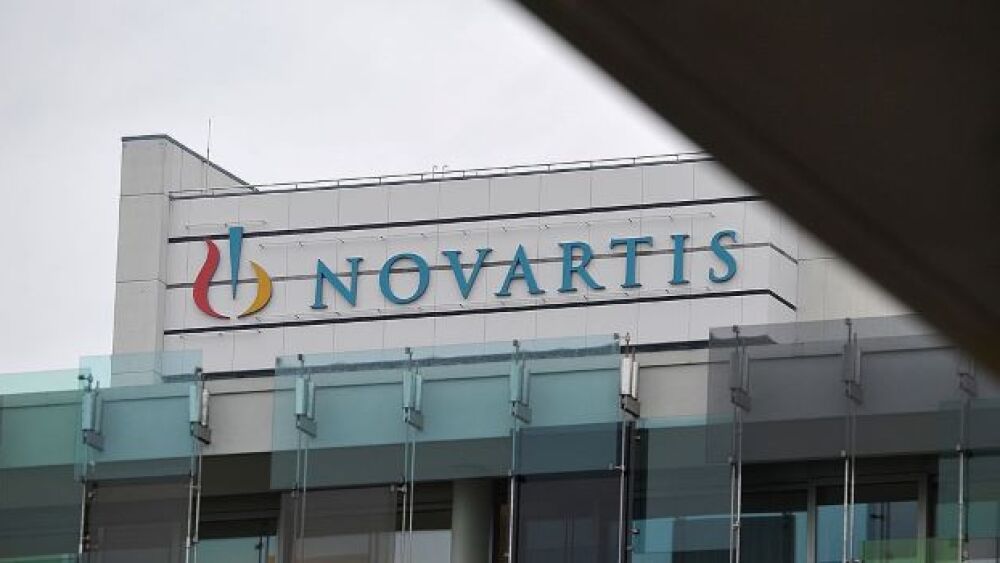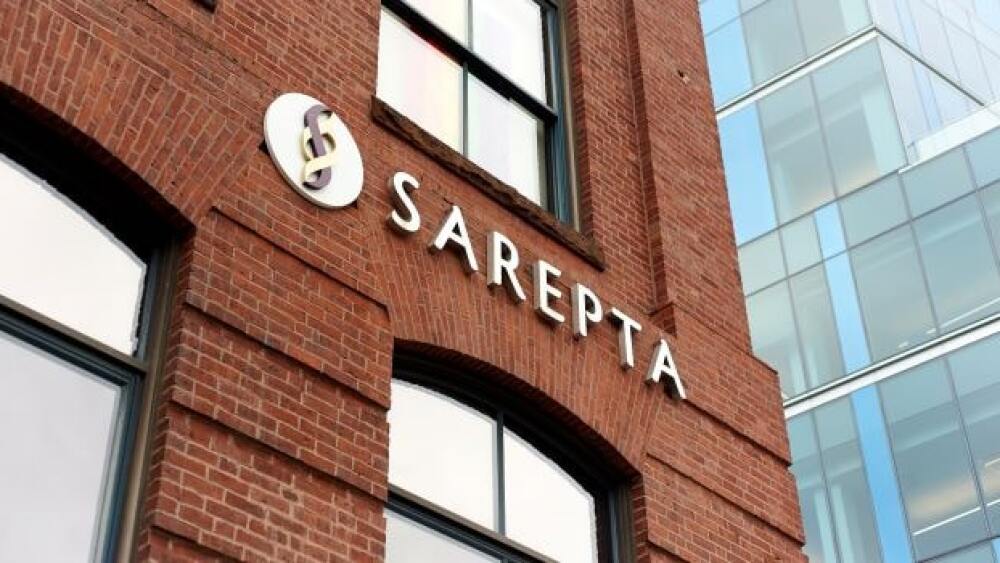Novartis released new data Monday from its Phase III SPR1NT trial that reinforces the benefits of Zolgensma.
Harold Cunningham/Getty Images
Spinal muscular atrophy (SMA) is a rare, autosomal recessive neuromuscular disease. It causes progressive muscle weakness and paralysis and is typically observed shortly after birth. It is caused by bi-allelic mutations in the survival motor neuron 1 (SMN1) gene. Per the Orphanet Journal of Rare Diseases, the estimated incidence is 1 in 6,000 to 1 in 10,000 live births. There are four types, with Type 1 being the most severe. Most patients with Type 1 will die before the age of two if untreated.
There are currently three drugs approved to treat it: Biogen’s Spinraza (nusinersen); Genentech’s Evrysdi (risdiplam); and Novartis’ Zolgensma (onasemnogene abeparvovec).
Spinraza, the first to be approved, is dosed every four months for the rest of the patients’ lives. It currently costs $625,000 to $750,000 in the first year, then $375,000 every year afterwards. Evrysdi is priced on patient weight. For infants under 15 pounds, who are typically under two years of age, the annual price runs less than $100,000 and is capped at $340,000 annually, or 44 pounds. Both Spinraza and Evrysdi need to be taken throughout the life of the patient.
Novartis’ Zolgensma is a different situation, designed to be a one-time treatment. Most clinicians and researchers steer clear of the word “cure,” and the lifetime effectiveness of the gene therapy is largely unknown, but it appears promising. One catch is that the price is about $2.1 million for that single treatment.
Novartis released new data Monday from its Phase III SPR1NT trial that reinforces the benefits of Zolgensma. The company stated that the therapy “demonstrated that children with three copies of the SMN2 back-up gene who were treated presymptomatically achieved age-appropriate motor milestones, including standing and walking.”
Additional posthoc analysis of three other studies, START, STR1VE-EU and STR1VE-US also found that children with SMA Type 1 hit or maintained important measurements of bulbar function after treatment, including ability to talk, swallow and eat and maintain airway protection.
“Results from SPR1NT again confirm the remarkable impact of Zolgensma for children at risk for SMA who are treated before the onset of symptoms,” said Dr. Kevin Strauss, M.D., medical director, Clinic for Special Children in Pennsylvania. “In sharp contrast to the natural course of SMA, children treated preemptively with Zolgensma are standing and walking, with few or no signs of neuromuscular disease. Many of these children achieve patterns of motor development indistinguishable from their healthy peers without SMA. These data clearly demonstrate the value of newborn screening for SMA, which is vital to affording children the earliest diagnosis and treatment to ensure the best possible outcomes.”
Despite their life-saving effectiveness, the therapies all have faced criticism over their price, particularly Zolgensma.
For example, U.S. Senators Bernie Sanders and Elizabeth Warren, with three others, accused AveXis, the company that originally developed Zolgensma before being acquired by Novartis, of “privilege and greed.”
For its part, Novartis defends the price of the gene therapy as a savings over the life of the child and says in terms of that median price and comparison to other diseases, is actually cost-effective.
“We have to look at the cost over a lifetime,” Mike Fraser, a general manager at Novartis Gene Therapies, told The Guardian. “People say a product like Zolgensma is so expensive. But if you look at other drugs, such as in oncology, over a lifetime, you’ll see that those are much more expensive. We do believe that it’s a very fair and value-based price.”
Of course, with prices that high, it comes down to government payers and in some cases private payers to cover the costs. For the most part, they have been willing to. A 2020 AMCP Market Insight report noted, “Payers acknowledge that SMA has a substantial effect on the quality of life of patients, caregivers and their families. Some payers also noted their organizations were mindful during policy development and decision making of the specific need to take into account the child population, treatment timing, rarity and severity of the disease.”
They are also factoring in the intensive care and risk required to otherwise provide supportive care for these patients, which can involve respiratory, gastroenterology, orthopedic care, nutritional support, physical therapy, assistive technologies, occupational therapy and social care.
Dr. Francesco Muntoni, a pediatric neurologist at Great Ormond Street Hospital in London, told The Guardian that the use of the three drugs had outcomes that are “unrecognizable” compared to only a few years earlier.
“In neurology, they are among the most effective drugs produced in the last few decades. Essentially, every child is surviving now,” Muntoni said.
On the other hand, for treatment with Zolgensma to be effective, early treatment is required, which is why there is a push for earlier diagnosis. As the weight of the child grows, not only does the price of the drug get higher, but so do the complications, and benefit decreases.
“One still has to distinguish between miracles and effective drugs. When the condition has advanced beyond repair, no drug will reverse that,” Muntoni said.
Journalist Arnaud Robert and photographer Paolo Woods have been conducting a project called “Happy Pills” on the role of medicines in the modern world. As part of the project, they have been interviewing and documenting the families of the first children to receive Zolgensma. They noted that the drug’s reputation is as a “miracle drug” but that many countries can’t afford to provide it, resulting in parents turning to crowdfunding.
Robert said, “On one hand, the results are amazing.” Referring to one patient, who is now six, “This kid would have died. But Louis is in a wheelchair, he’s been to ICU seven times, he has someone sleeping in his room every night because they are scared about respiratory issues. Zolgensma is not a miracle drug.”
In the U.K., the National Health Service (NHS) has made a deal with Novartis for a discount on the drug, but a clause in the contract says the final price will remain confidential “in perpetuity.” Since 2020, Novartis has agreed to offer the therapy free to 100 babies each year in countries where it has not received regulatory approval by way of a lottery-type drawing. This has been met with criticism as well, with one group, Just Treatment, describing it as a “real life Hunger Games.”
Of course, if Novartis did nothing, it would face criticism as well. Dr. Elizabeth Wraige, a pediatric neurologist at Evelina London Children’s Hospital, noted, “If you can’t do if fairly, do you do nothing? I don’t think that either. The inequities are part of a wider societal and political issue.”





